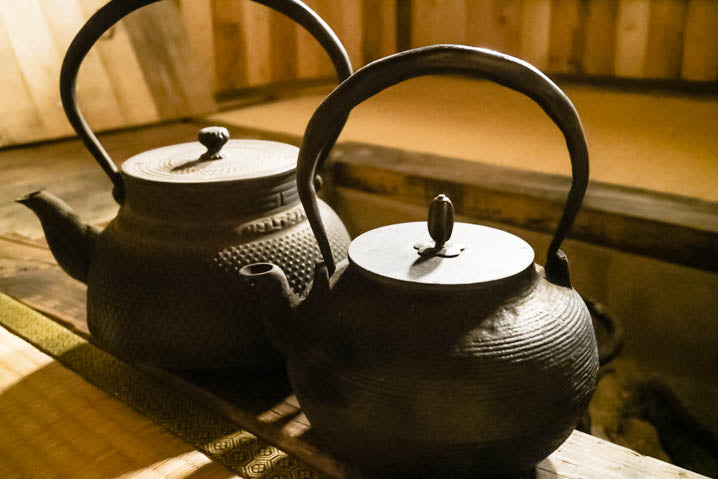
Japanese Cast Iron Tea Kettles: A History of the Tetsubin
While the tetsubin (鉄瓶, which means ‘iron kettle’) is a common tool mentioned by Japanese tea lovers, you may be unfamiliar with its history or the appeal of using one to brew tea.
Craftsmen create these tea kettles in various shapes and sizes, ranging from simple to elaborately made designs. When handcrafted to perfection, a tetsubin becomes a treasured item, appreciated and passed down through generations. These special pieces have a unique history in Japanese culture.
Fortunately, we're here to explain the history of tetsubin, or Japanese cast iron tea kettles, to you! You'll also discover why many tea lovers choose to use a tetsubin in our modern times.


What are Tetsubin?
Tetsubin are Japanese tea kettles (or teapots) made of cast iron. In order to fully understand the history and the usage of tetsubin, it is important to note and understand the history of tea culture in Japan. Traditionally, Japanese tea culture was focused on Japanese tea ceremonies, known as chanoyu (茶の湯) or sadou/chadou (茶道).
The practices of a Japanese tea ceremony involve many details, and each utensil used from start to finish is a symbolism of peace, harmony, and hospitality. For example, the slow boiling of water in a tetsubin allows for a moment of mindfulness, patience, and care.
While the iron kettles were later only used for outdoor chanoyu as well as for novice students learning how to perform and host a chanoyu, its history of it begins with the arrival of sencha to Japan.


The History of Tetsubin and Its Usage
As it is not clear where the first tetsubin kettles appeared, it is speculated that the creation and usage coexisted with the popularity of sencha.
Introduced in China in the 17th century, drinking sencha was not done in ceremonies like chanoyu. Chanoyu was reserved for the ruling and wealthy upper class. Typically drinking sencha was done in informal settings, in order to get together and share a cup of tea with friends and families. However, in the 18th century, tea drinking began to be adopted and more widespread among the common people. Because Chinese teaware at the time was expensive and rare, artisans in the Iwate Prefecture began handcrafting tetsubin. Many still use these traditional handcrafting processes today.
As popularity grew, these newly created iron tea kettles became a common household item. In the 19th century, tetsubin designs went from simple to becoming more elaborate. The more elaborate the design, the higher the price. The style of tetsubin one held became a reflection and symbol of one’s status.


The Appeal and Usage of Tetsubin Today
While tetsubin is traditionally used for boiling water only, many use it to brew tea nowadays as well. They say that the finished tea has a smoother and fuller taste due to the nutrients from the iron steeping into the water.
Another major appeal is that high-quality tetsubin properly cared for can be passed down to the next generation. If you love Japanese tea, practicing the use of a tetsubin kettle cant instantly give you a moment of reflection. It causes us to slow down and make each cup of tea with intention, allowing us to continue practices of slow-paced living and balance.
If you want to read more articles on teaware, check them out here:
- 4 Ways to Brew Loose Leaf Tea Without and Infuser
- 3 Ways to Make Matcha Without a Whisk
- How to Use a Kyusu or Traditional Japanese Teapot
- 8 Essential Teaware Tools for Every Tea Lover
- How to Brew Green Tea with a Yuzamashi
- How to Make Matcha with a Bamboo Whisk
Share your moment with us and stay connected on:










